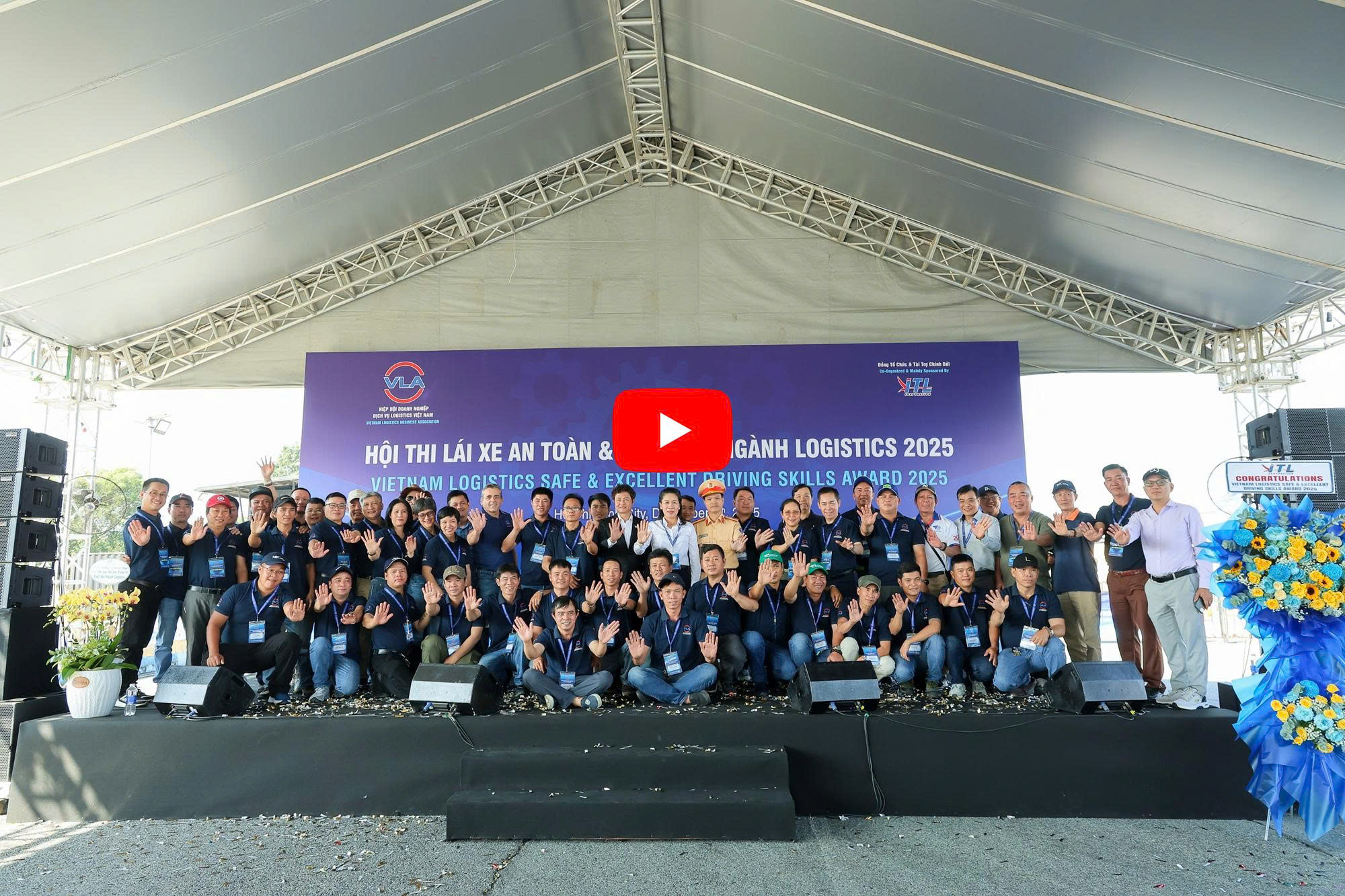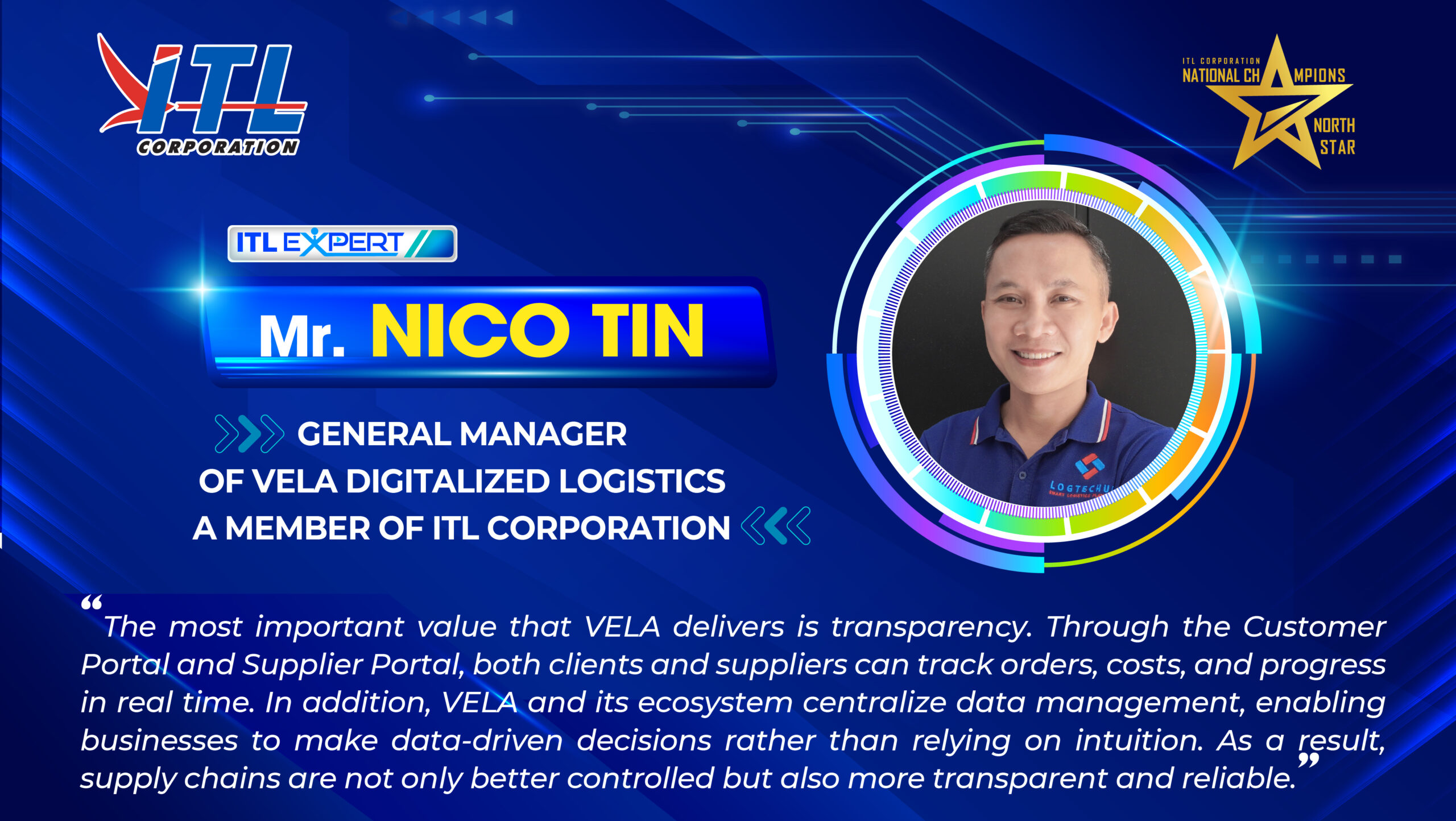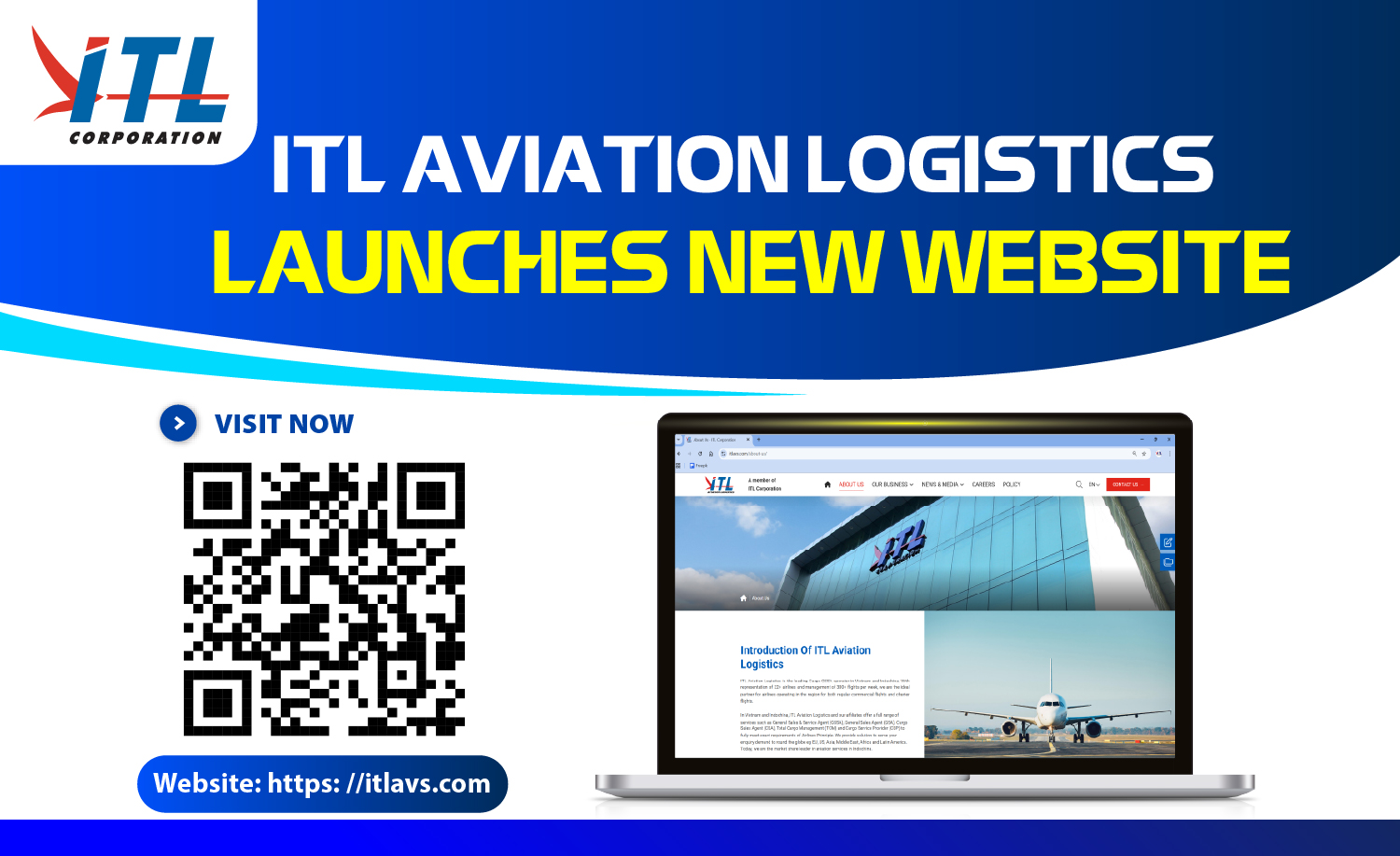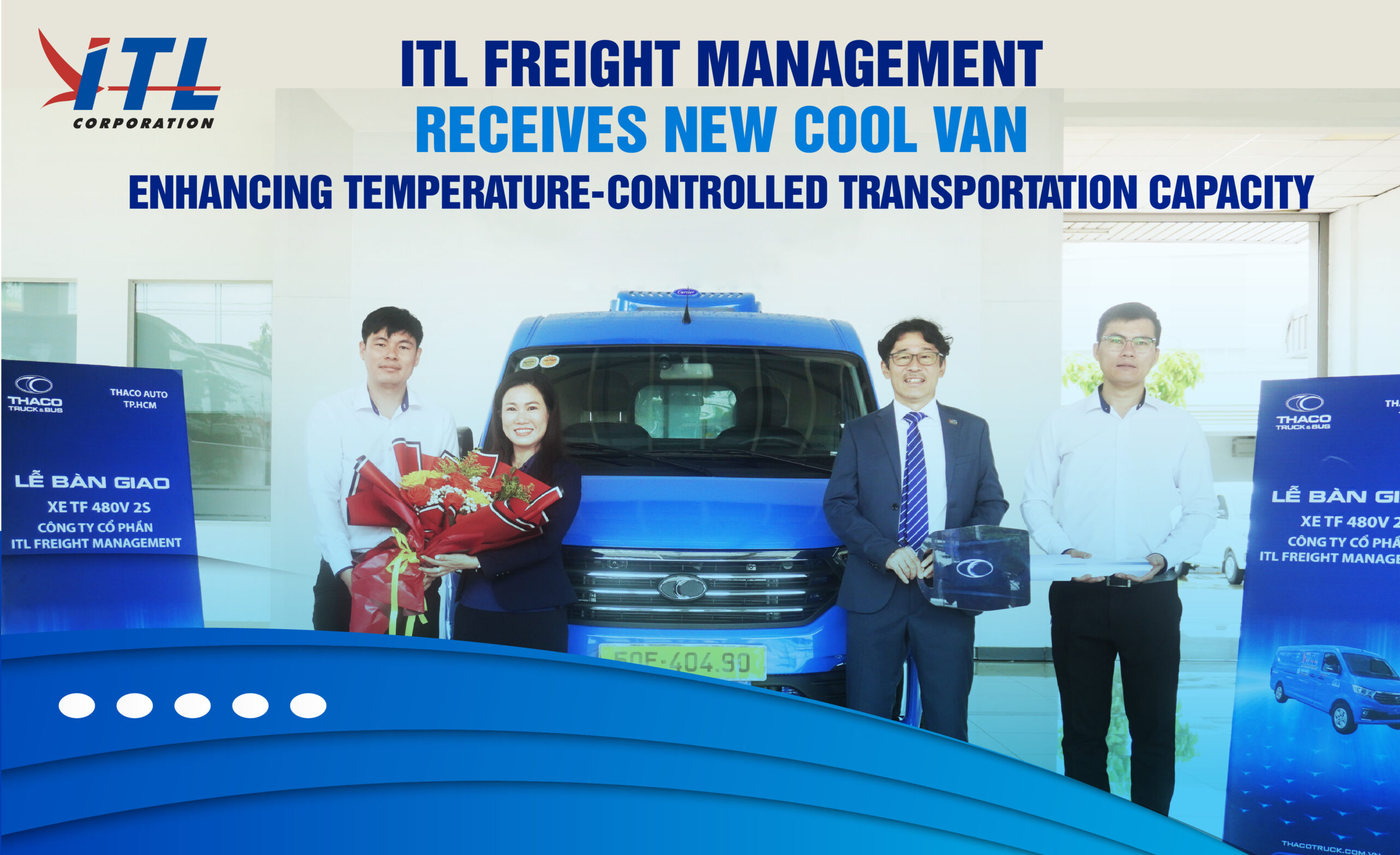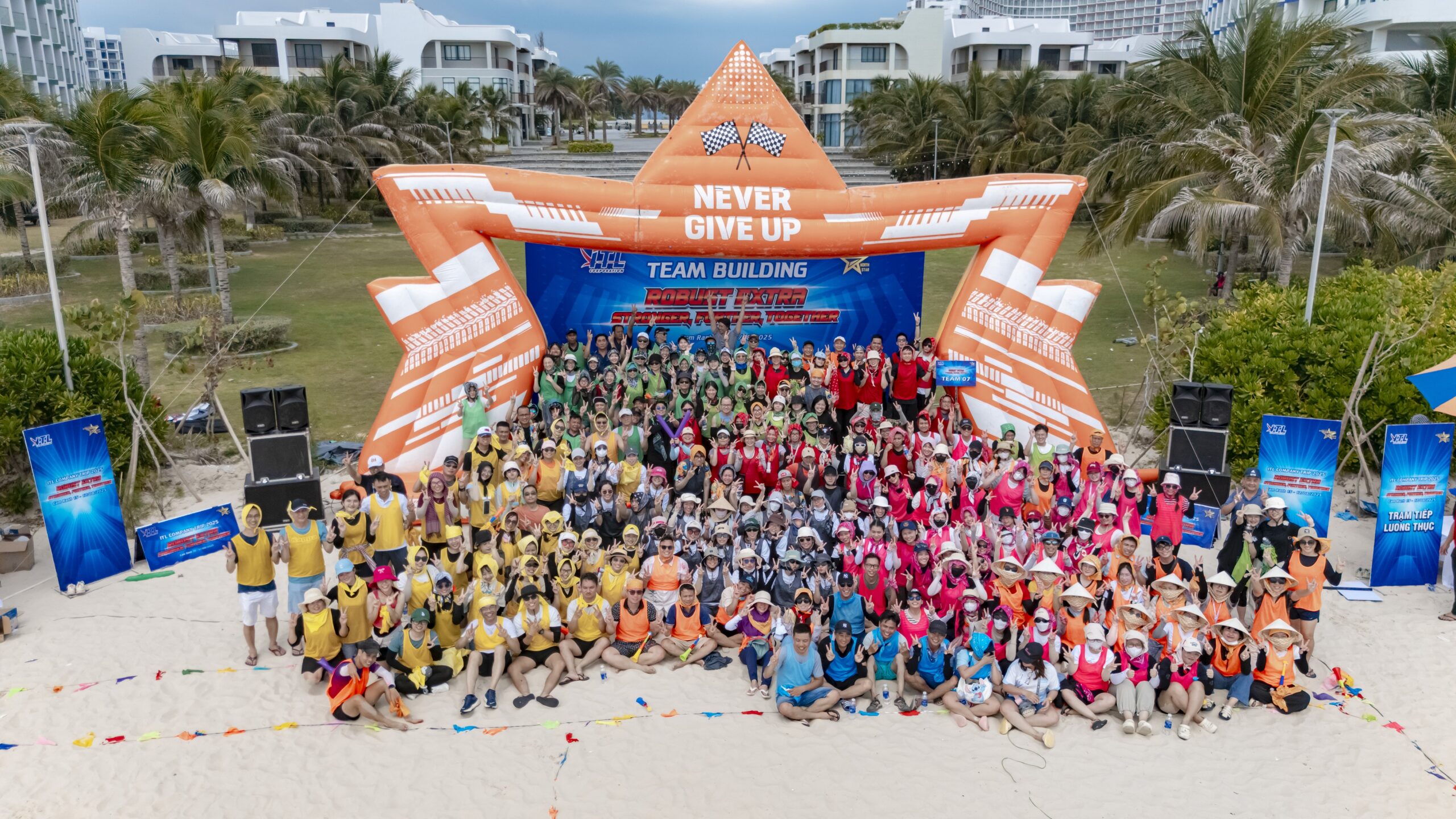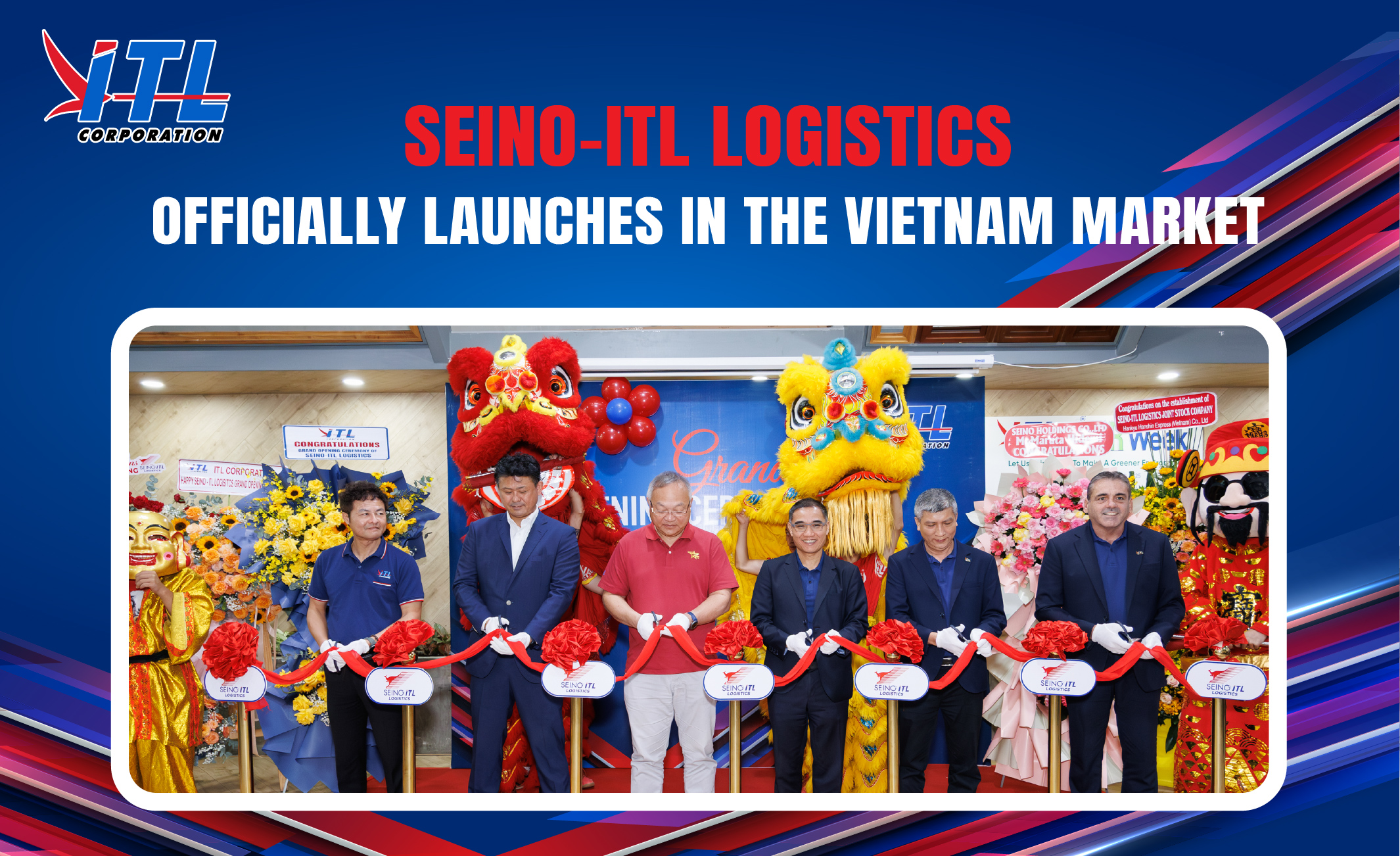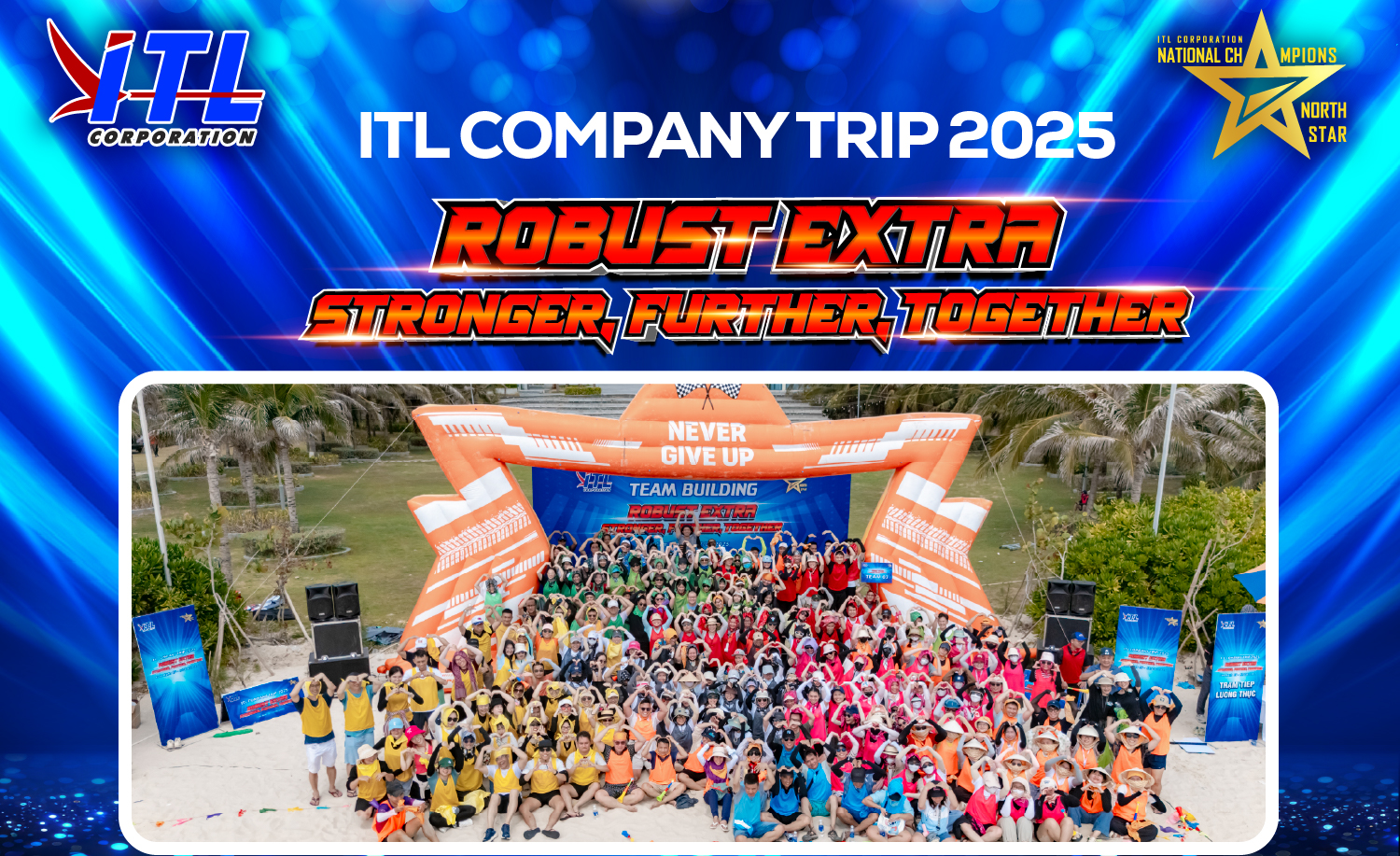[ITL Expert] Mr. Patrick Ha – Director Of Sowatco Long Binh Port
Sowatco has built a broad, diverse, and solidly connected ecosystem in the field of inland waterway transport. Sowatco boasts outstanding achievements and competitive advantages, including advanced shipbuilding technology, the largest vessel sizes on the market, and an extensive network of ports and warehouses. We continue to pursue a long-term, sustainable development strategy to stay ahead of the trend and reinforce its position as a key link in the interregional supply chain.”
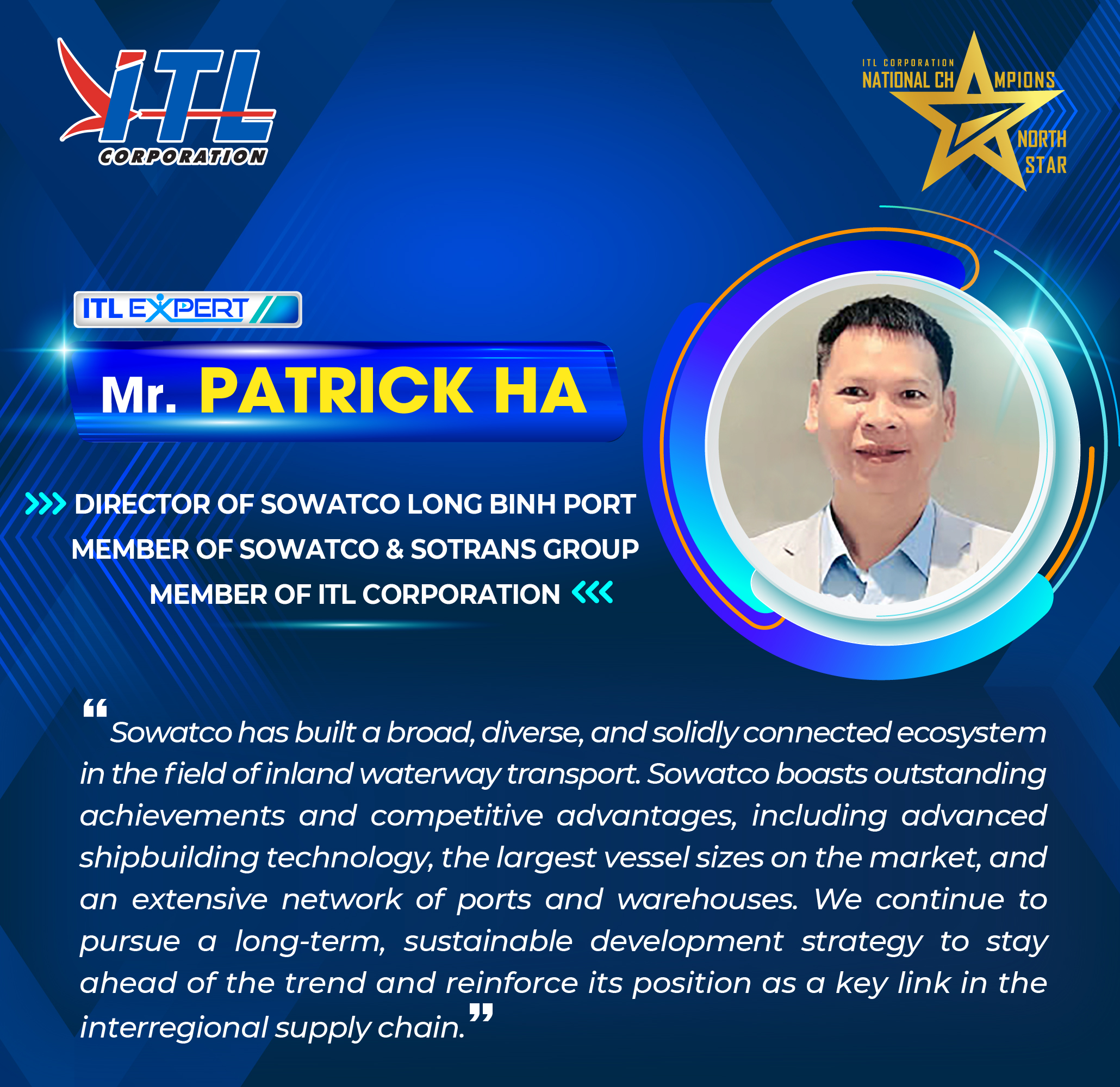
- How do you evaluate the potential of inland waterway transport in the national Logistics infrastructure development strategy? What is Sowatco’s long-term development direction to anticipate this trend and strengthen its position in the interregional supply chain?
Vietnam has an extensive river network stretching 17,000 km, of which approximately 7,000 km are commercially operated. The country boasts 310 ports, over 6,000 inland waterway terminals, more than 270,000 watercraft, and 352 shipbuilding facilities. Inland waterway transport accounts for approximately 20% of the total cargo volume transported nationwide (Vietnam Inland Waterway Administration – 2023).
Inland waterway transport offers significant advantages over road transport, such as 40-60% cost reduction and 60-75% CO2 emission reduction (internal statistics It also helps to address current social issues such as traffic congestion and accidents, while contributing to socio-economic development.
According to the Vietnam Sea Ports Association (VPA), cargo throughput across the Northern, Central, and Southern regions has shown strong double-digit growth:
- Northern region – Hai Phong: In 2024, throughput reached 5.3 million TEUs, a 21% increase compared to 2023
- Central region – Da Nang: In 2024, throughput reached 975,000 TEUs, a 13% increase compared to 2023
- Southern region – HCMC & Mekong Delta: In 2024, throughput reached 9.2 million TEUs, a 10% increase compared to 2023
- Southern region – Cai Mep: In 2024, throughput reached 7.1 million TEUs, a 29% increase compared to 2023
Vietnam is currently the leading country in Southeast Asia in terms of public investment in infrastructure, reaching 5.7% of GDP — the highest in the region and second in Asia, only after China at 6.8% of GDP (Vietnam Inland Waterway Administration). Alongside this, the Government’s Decision No. 1829/QĐ-TTg on the master plan for inland waterway infrastructure development for the period 2021–2030, with a vision to 2050, as well as its strong commitment to reducing emissions by 50% by 2030 and achieving net-zero emissions by 2050, reflect a clear strategic direction for sustainable growth.
With the trend of global integration and the expansion of global supply chains, many major domestic and international partners are now focusing on and investing in ecosystems and supply chains geared towards green technology and environmentally friendly solutions, while maintaining competitive costs.
Based on the above factors, I can affirm that the development of inland waterway transport is a strategic and sustainable solution for advancing the nation’s Logistics infrastructure.
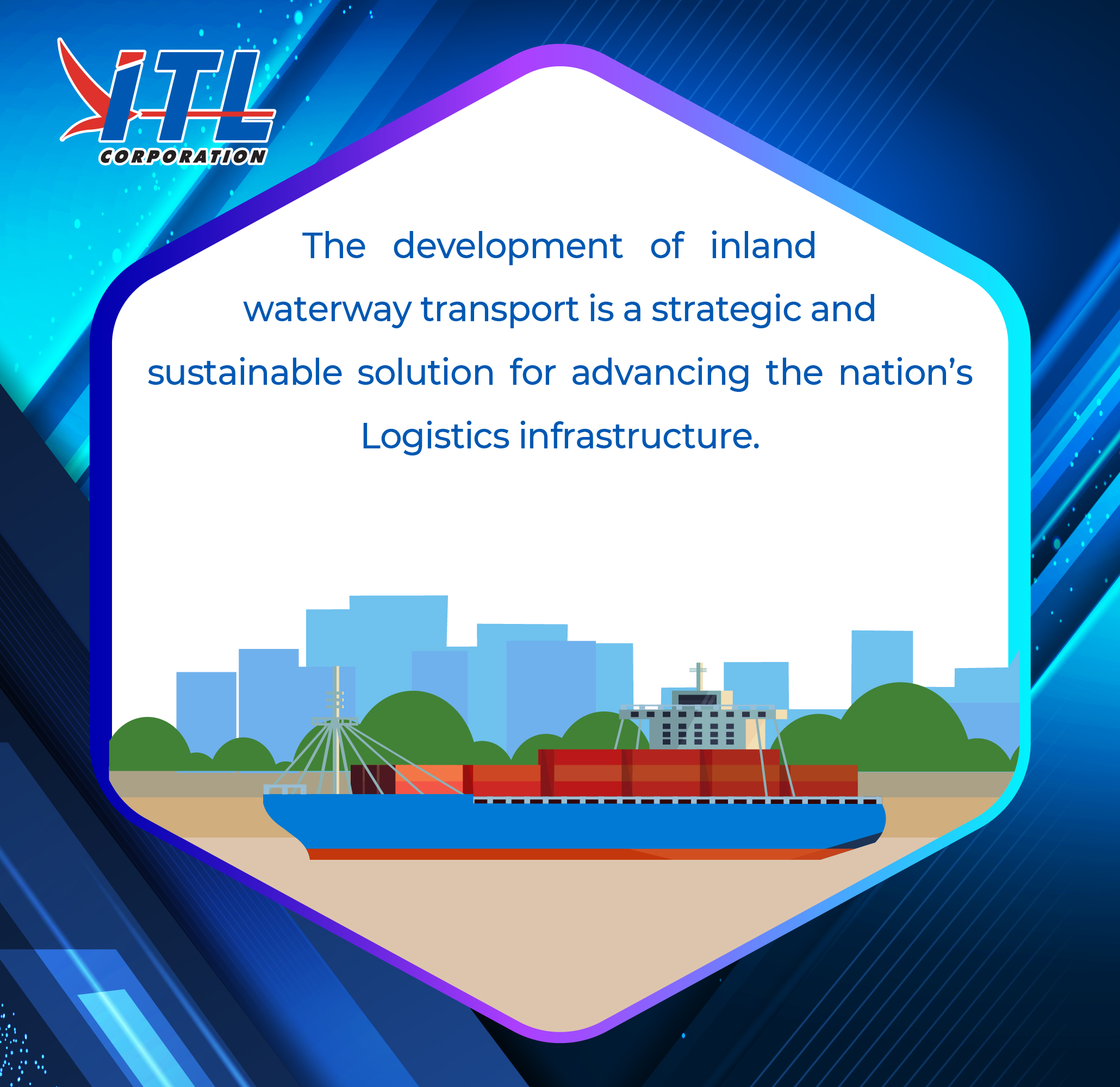
Currently, Sowatco has built a broad, diverse, and solidly connected ecosystem in the field of inland waterway transport. Sowatco boasts outstanding achievements and competitive advantages, including advanced shipbuilding technology, the largest vessel sizes on the market, and an extensive network of ports and warehouses. Sowatco continues to pursue a long-term, sustainable development strategy to stay ahead of the trend and reinforce its position as a key link in the interregional supply chain, through initiatives such as:
- Maintaining annual new shipbuilding with the largest vessel sizes currently on the market, while also initiating procedures to build river-sea compatible vessels. These are designed to operate on various routes using green, energy-efficient technologies that reduce emissions and are environmentally friendly.
- Continuing to invest in the development of new inland waterway ports and ICDs in Can Tho and Bac Ninh, and especially focusing on the redevelopment and operation of one of Ho Chi Minh City’s major seaports — a critical gateway for international cargo and vessel traffic — to ensure seamless connection with our existing ecosystem.
- Upgrading equipment and technology towards green, clean, and environmentally friendly standard while integrating automation into operation processes. This transformation aims to enable seamless cargo movement and enhance visibility and reliability for all stakeholders.
- Developing a centralized system capable of quickly and accurately collecting comprehensive data on all business and operational activities across the group’s ecosystem, enabling timely and well-informed decision-making and strategic direction.
- Partnering with major stakeholders who share the same strategic vision to develop sustainable network-to-network (N2N) connectivity.
- Developing a well-trained, dynamic, and creative workforce that is consistently focused on improving operational quality and optimizing service delivery.
- What role does the collaboration between Sowatco and other member companies in ITL’s ecosystem play in delivering integrated Logistics solutions, especially for North–South domestic transportation by barge and connectivity to international seaports?
Currently, ITL Corporation’s ecosystem offers door-to-door services for major clients, transporting goods from seaports through inland container depots (ICDs) to factories and vice versa. Within this process, Sowatco is responsible for operating the ICD segment and inland waterway transport.
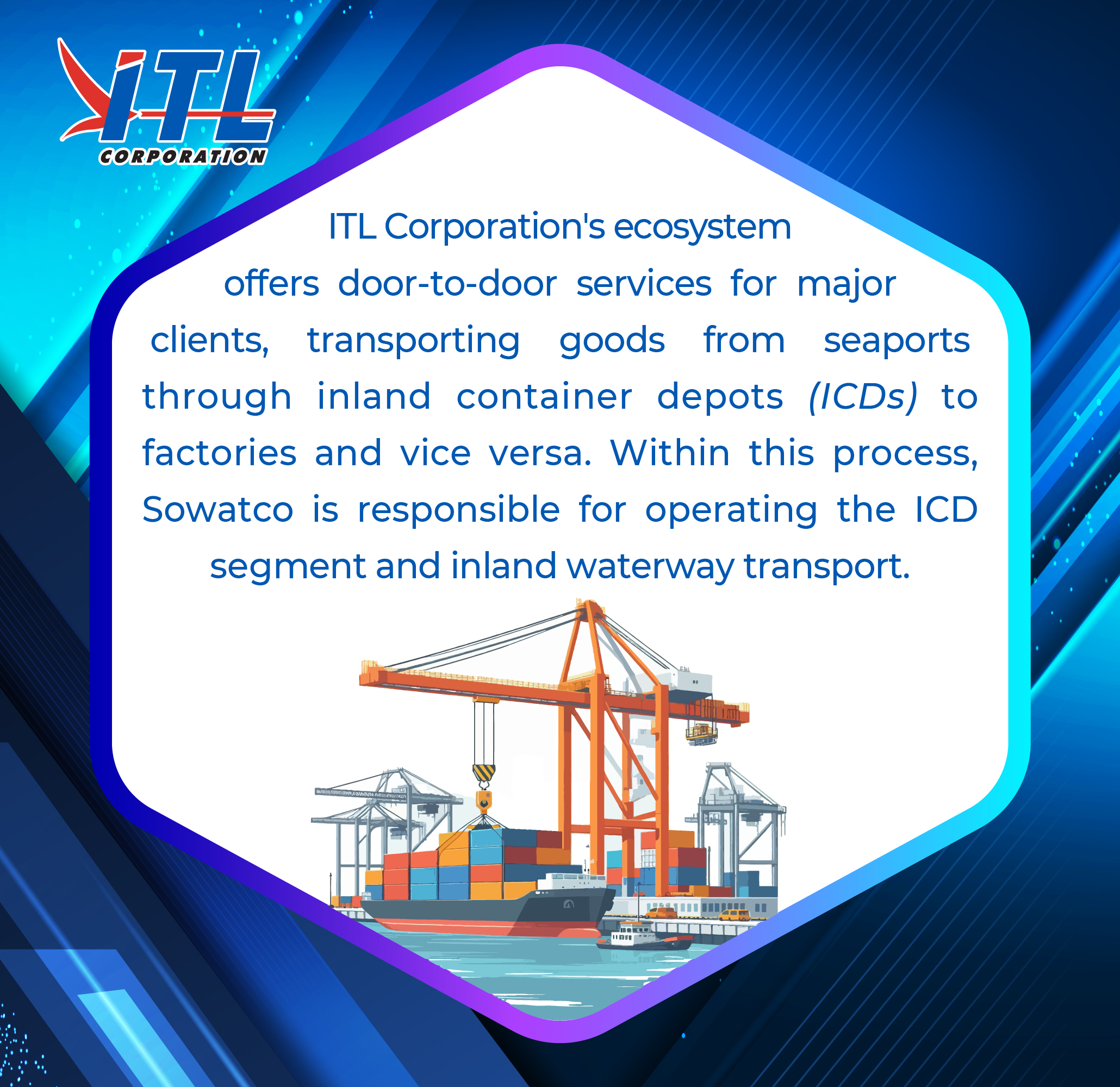
With the integrated Logistics services, the role and coordination of all member companies within the ecosystem are the key factors in ensuring seamless, efficient, and synchronized execution across the segments. The goal is to deliver services that meet the highest standards: speed, punctuality, reliability, cost- effectiveness while prioritizing safety, environmental protection, and community contribution. Customer satisfaction remains the guiding principle for sustainable business growth and operations. A clear example is ITL’s ongoing support for numerous major clients with strict requirements for quality and safety, which demand professionalism and operational excellence at every link in the chain.
- Currently, many Logistics enterprises are focusing on Green Logistics and port operation capabilities. Could you please share about the container handling capacity, warehouse systems, and technological solutions that Sowatco Long Binh has implemented to enhance its operational efficiency?
At the current stage, Sowatco Long Binh Port is capable of handling 600,000 to 700,000 TEUs of container cargo and 1 million tons of bulk cargo per year. For bulk cargo, the port uses a direct ship-to-truck (and vice versa) loading/unloading method. Meanwhile, container cargo is gathered in the yard for further processing steps —such as inspection, container repair, seal checking, customs clearance, stuffing and unstuffing, equipment assembly—before final delivery through the gate or at the berth.
In 2022, the port took the lead in digital transformation by introducing a new IPOS (ICD-Port Operating System), equipped with advanced features and integration capabilities. This system is designed to be compatible with those of relevant stakeholders and aligned with the functions and utilities of modern ports. Key features include:
- Offering online services that allow customers to register and make payments from anywhere.
- Accessing e-services and real-time tracking of handling operations and truck movements in and out of the port, eliminating the need for paper invoices and delivery documents.
- Enabling electronic data transmission across various formats, such as CODECO for container gate-in/gate-out, integration with Booking CORPAN, API-based transmission of eEIR slips, API/EDI for inspections, quotations, and BAPLIE stowage plans for barges.
- Automating stowage planning and task order allocation, with instructions transmitted via electronic devices and service operations updated in real time.
- Reducing manual processes through synchronized and transparent data, enabling operational reconciliation to minimize errors.

The port has been maintaining and implementing the Occupational Health and Safety Management System (ISO 45001) and the Environmental Management System (ISO 14001) across all operations. These systems ensure that potential hazards and environmental risks are consistently assessed and controlled, with a strong focus on safe, clean, and environmentally friendly operations. Sowatco Long Binh is honored to be recognized by both domestic and international partners and authorities as one of the most modern, green, and clean inland ports in Vietnam.

